The buyout of Twitter by Elon Musk has spotlighted Mastodon – a decentralized microblogging platform that offers similar features to Twitter. But while there are similarities, Mastodon is its own platform. And learning to use it can be a bit of a curve.
Even when you cross the initial (and biggest) hurdle of choosing a server to join Mastodon, adjusting to Mastodon can take some work. And that’s truer when you’re expecting an exact experience to Twitter. But don’t fret because we’re here to help you. This guide will help you, no matter what you want to find on Mastodon.
How Does Search Work on Mastodon?
First things first. No matter which server you’re using, the user interface for basic functions, like Search, will be the same. So, you can put those worries out.
Now, the Search function on Mastodon hadn’t been as refined as other social media platforms and it causes some confusion. But ever since people are flocking to the platform, there have been changes to the app. Searching for people, for example, has become more efficient.
You can now search for people using their usernames or display names, without the limitation of requiring the domain name (i.e., server information) or exact usernames. Previously, you needed both the username and the domain name to find a user on Mastodon. Otherwise, searching with just the username would yield a result only if that user existed locally on your server. All that has changed for the better now.
But unfortunately, searching for posts is still limited. You can only search for posts using Hashtags. And by far, it has been a design choice to afford people the ability to keep their posts’ audience limited. Twitter has seen this trend where people have deliberately used the search feature to find posts, and insert themselves into narratives with the sole purpose of harassing those who have an opposite viewpoint. With posts only discoverable by Hashtags on Mastodon, users can decide whether they want others to find their toots or not, simply by including or excluding a Hashtag.
Using Search on Mastodon
Whether you’re using Mastodon on a computer or the iOS/ Android app, the ‘Search’ option stays the same. The feature would also be the same on any third-party apps, even if the UI would be different.
If you’re using Mastodon on your computer, go to your server domain (for example, @mastodon.social) and sign in with your Mastodon account.
Then, go to the ‘Search’ option towards the top-left corner of the page, above the compose box.
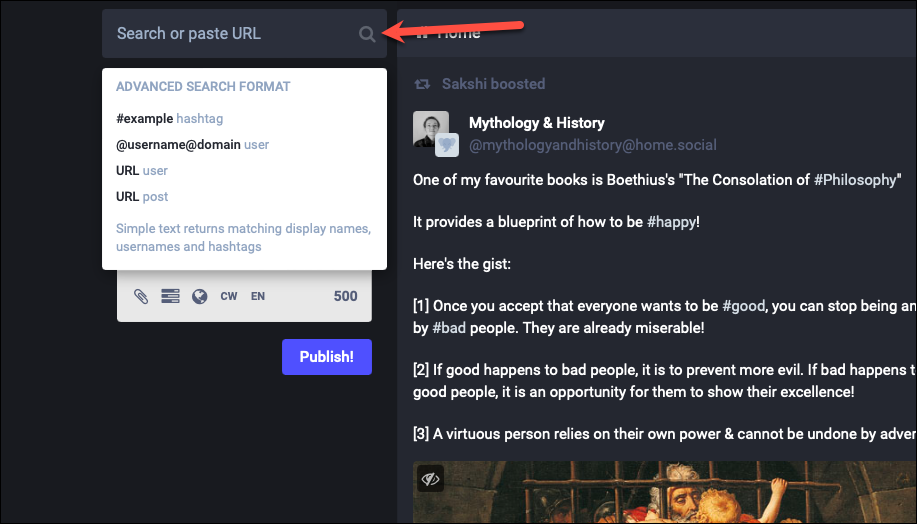
If you’re using the mobile app, tap the ‘Search’ option on the navigation menu at the bottom.
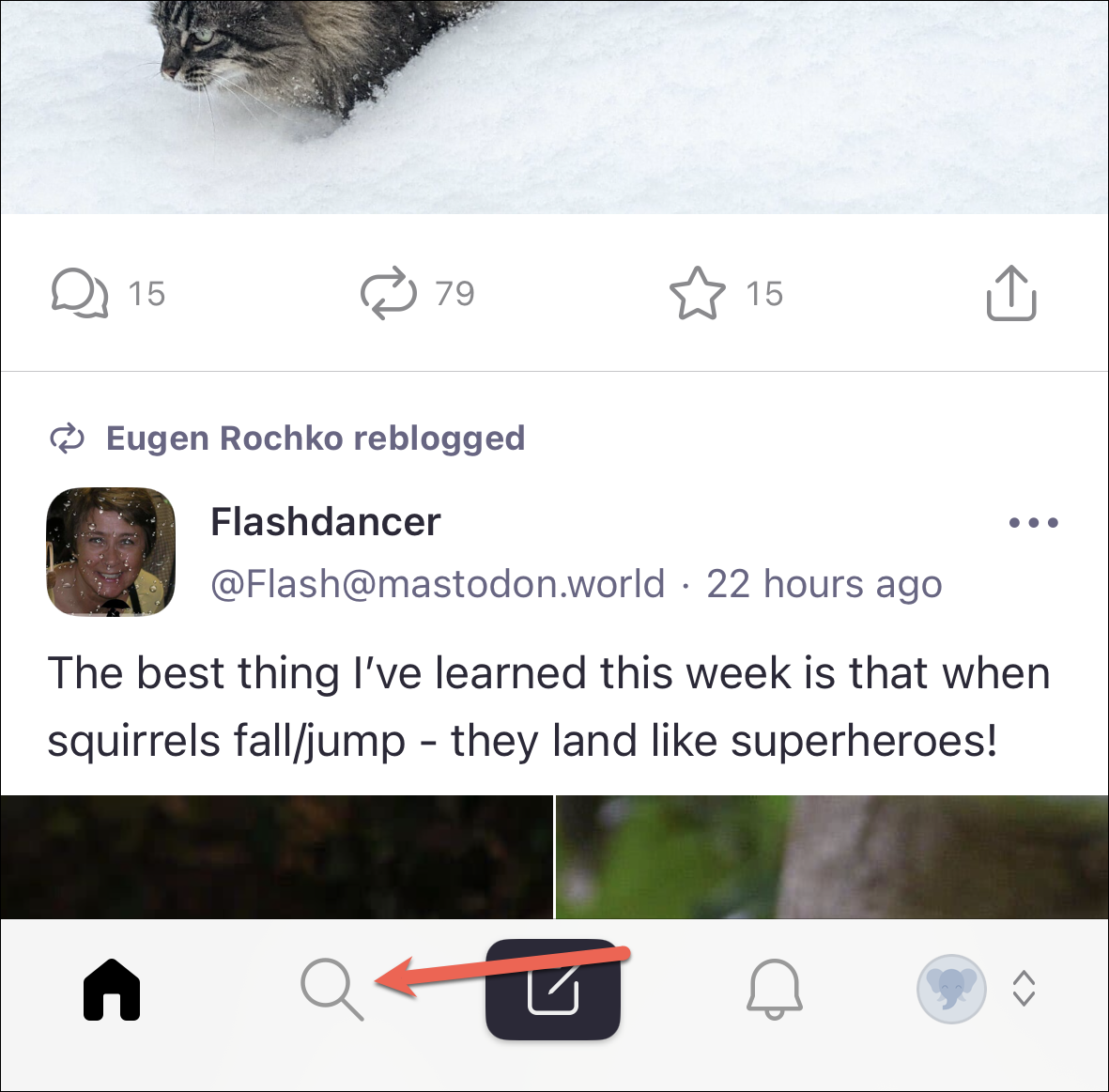
Then, tap the search bar at the top.
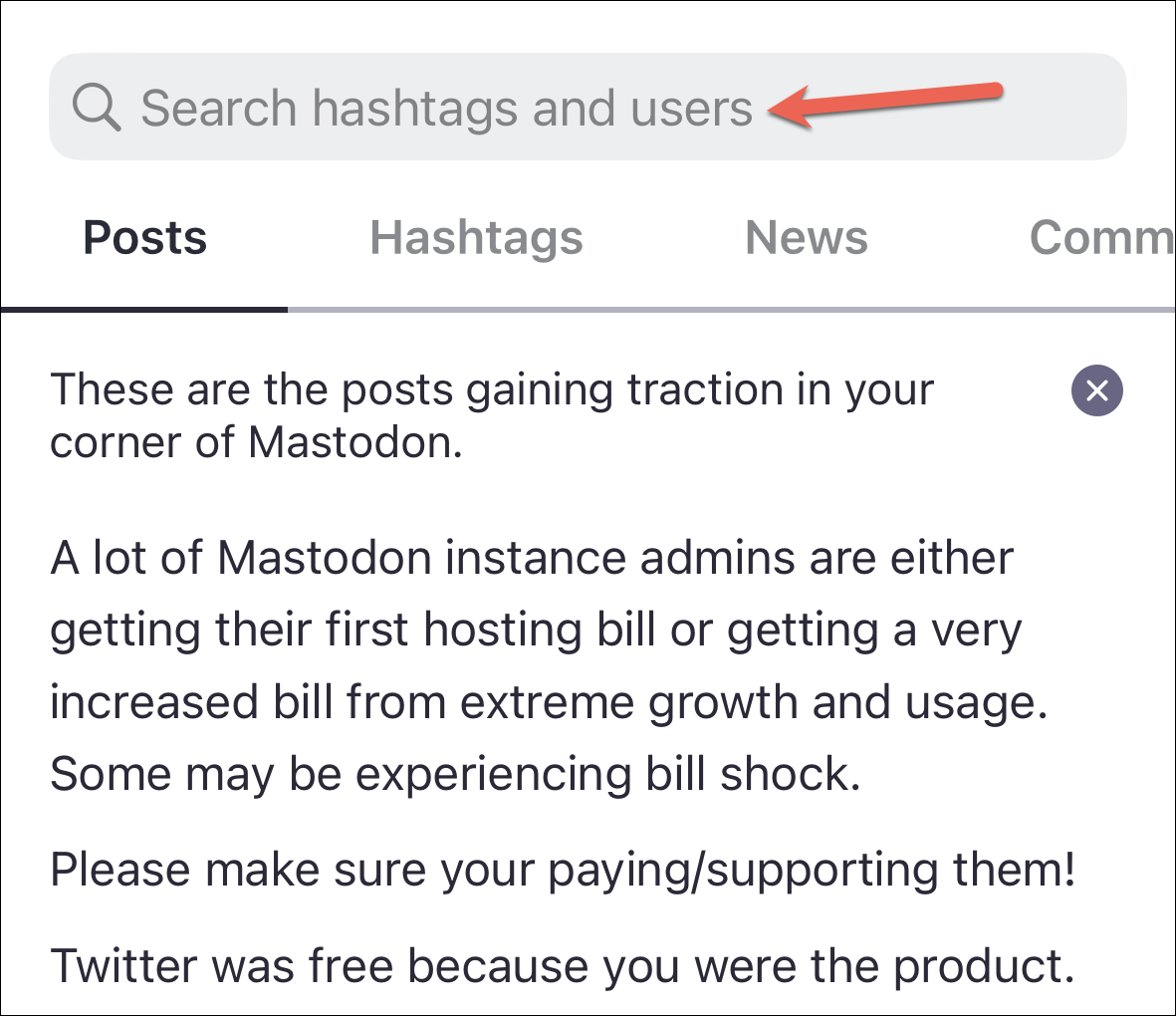
Searching for People on Mastodon
Now, to search for a person on Mastodon, you can either search using their username or display name.
If you know the username and the server of the person you’re trying to find, always use it as it is the quickest way to find someone. It’ll return only the exact account you’re looking for if it exists. Begin your search query with @ followed by their username, then end it with @domainname.
So, to search for Eugen Rochko whose username is ‘Gargron’, enter @Gargron@mastodon.social in the search field and press Enter.

Even if you don’t know someone’s server name, now you can enter just their username after starting it @ and your Mastodon server will show the results of all the users on other servers it knows about. For example, enter @Gragron in the search field.

But there is a chance that the user might be on a server that your server doesn’t know about. In this case, you won’t find them in the search results.
If you don’t know someone’s username, you can also try to find them using their display name. In this case, don’t start the query with @. Simply enter their name in the search field and the search results will show all the people with the same display names on all the servers your server can find.

You can also search for a person by entering the URL to their profile in the search field.
From the search results, you can directly follow the person, or click their username to view their profile.

If you want to use the search option to find your friends from Twitter on Mastodon, check out our separate guide on the same.
Searching for Hashtags on Mastodon
Now, if you want to search for posts on Mastodon, you can only search for them using Hashtags.
Enter the hashtag you want to search for in the search field and press Enter. Then, switch to the ‘Hashtags’ tab in the search results.

Click on the hashtag you want to see the posts for.
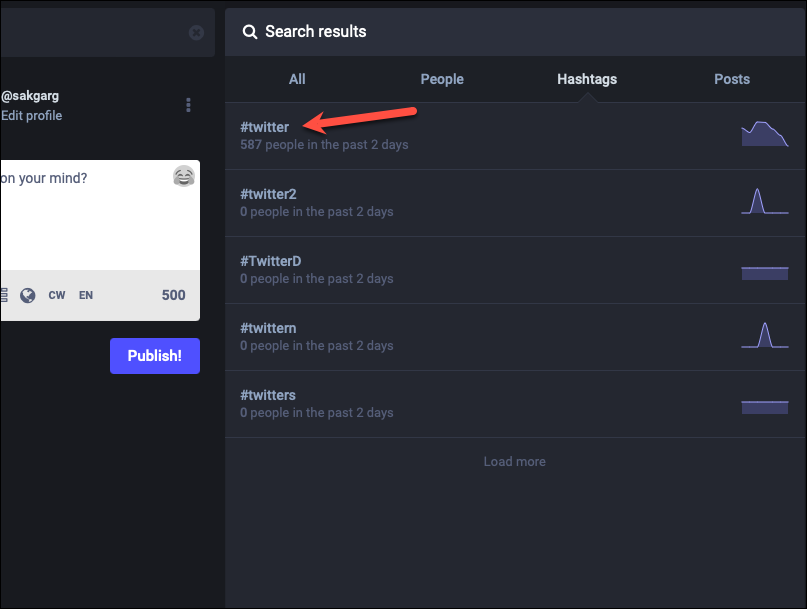
Any public posts on all the servers that have that hashtag will appear for you to go through. You can like and boost these posts or reply to them. You can even bookmark them or share them on other social media platforms. Or, you can visit the profile of the person who posted it and give them a follow.

If you go to ‘Posts’, you’ll find nothing there as of now.

You can also enter the URL for a post in the search field if you have it to search for it in the Mastodon network.

Discovering New Posts
If you simply wanted to use Hashtags to discover new and interesting posts on Mastodon, there are quite a few ways to go about it.
On the right, there are three options: ‘Local’, ‘Federated’, and ‘Explore’. You can use all these places to discover new public posts.
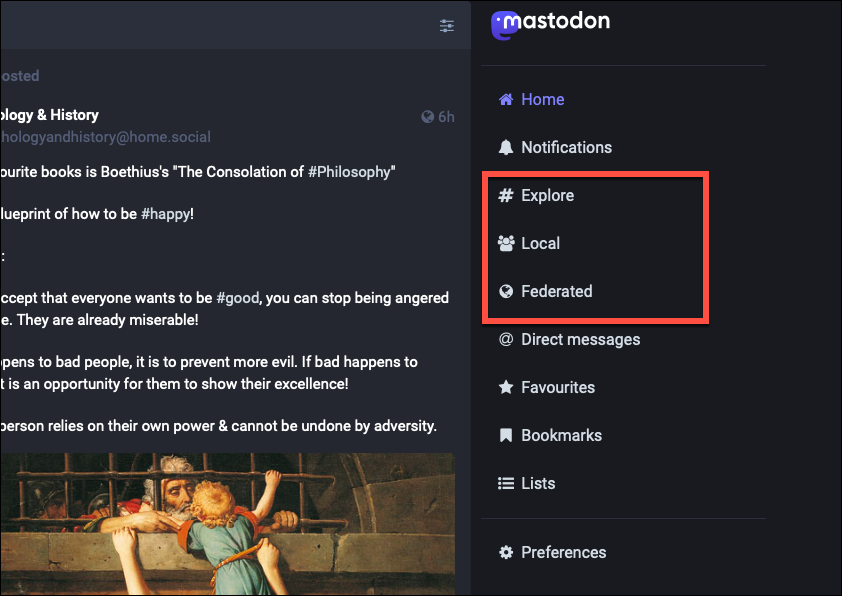
The Local Feed shows the most recent public posts from users on your server.

The Federated feed shows the most recent public posts from users on your server as well as other servers of the Mastodon network that your server knows about.

The Explore feed, on the other hand, shows posts from your and other servers that have been gaining traction on your server, i.e., local posts that are popular and posts from other servers that are popular with users of your server. You can switch between ‘Posts’, ‘Hashtags’, and ‘News’ to find new content from the Explore feed.
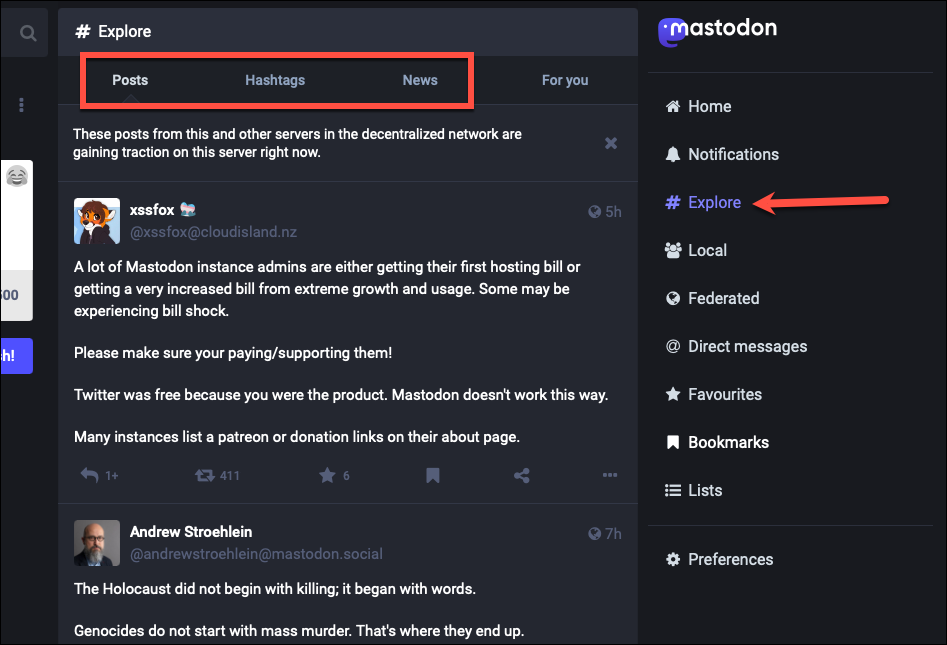
To find more people to follow on Mastodon, go to the ‘For You’ tab from your Explore feed.

Needing a place to connect with others is a must in today’s world. Mastodon is steadily becoming that place for many now, instead of Twitter. And hopefully, with this guide, you’re one step closer to figuring it out for good.

